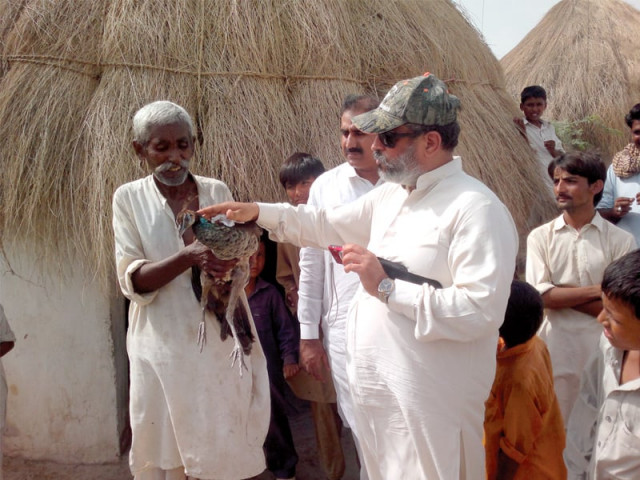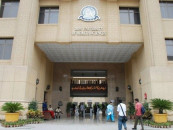As more peacocks drop dead, wildlife department tries to get to the bottom of the mystery
A virus, not a vitamin deficiency, might be responsible for the curious phenomenon.

As more peacocks drop dead, wildlife department tries to get to the bottom of the mystery
The Sindh Wildlife Department believes that the peacocks which died in Thar were suffering from ‘Ranikhet’ or Newcastle Disease, which is a fatal and contagious virus found among birds, including chicken. However, blood tests of sick and dead peacocks have yet to be conducted.
Although no exact figure for the dead peacocks is available, the residents of Mithi say that more than 50 have perished within a week across half a dozen villages. The ones which have died in the forest or were eaten by animals have not been included in this figure.
Over a week after the birds started appearing ill, chief conservator Saeed Akhtar Baloch visited those villages in Mithi which reported the highest incidence of deaths.
“If we had treated the peacocks in time, many of them would not have died,” he admitted. He has also suspended assistant conservator Lajpat Sharma and game officer Ashfaq Memon for showing negligence.
He added that a team of vets from the Poultry Development Department will come to Thar on July 23 with medicines so that the ailing birds can be cured.
Earlier, vets from the livestock and poultry departments said the peacocks had been suffering from an acute deficiency of vitamins and minerals.
The few peacocks which have been cured by vets of the livestock department were given vitamin supplements and an antibiotic. This raises questions about the plausibility of Baloch’s assertion that the birds are dying because of a fatal virus instead of some other reasons, such as a vitamin deficiency.
Hyder Nohrio, a resident of Hoti Jathar village, which was visited by the wildlife officials, said that over a dozen peacock had died there. “They whirl in a circle for a few minutes and take a brief rest, only to start again,” he said. “Some of them also try to fly but fall down on the ground with a heavy thud.”
School teacher Anupo Bheel of Bapuhar village, who was among the first to report the problem to the wildlife officers, said that not enough is being done to solve the problem. “They [wildlife officials] have been depending on the information shared by the villagers rather than examining the birds themselves.” Bheel believes that a medicine given to the ailing birds will not solve the problem if they are really suffering from some deficiency.
Published in The Express Tribune, July 23rd, 2012.



















COMMENTS
Comments are moderated and generally will be posted if they are on-topic and not abusive.
For more information, please see our Comments FAQ